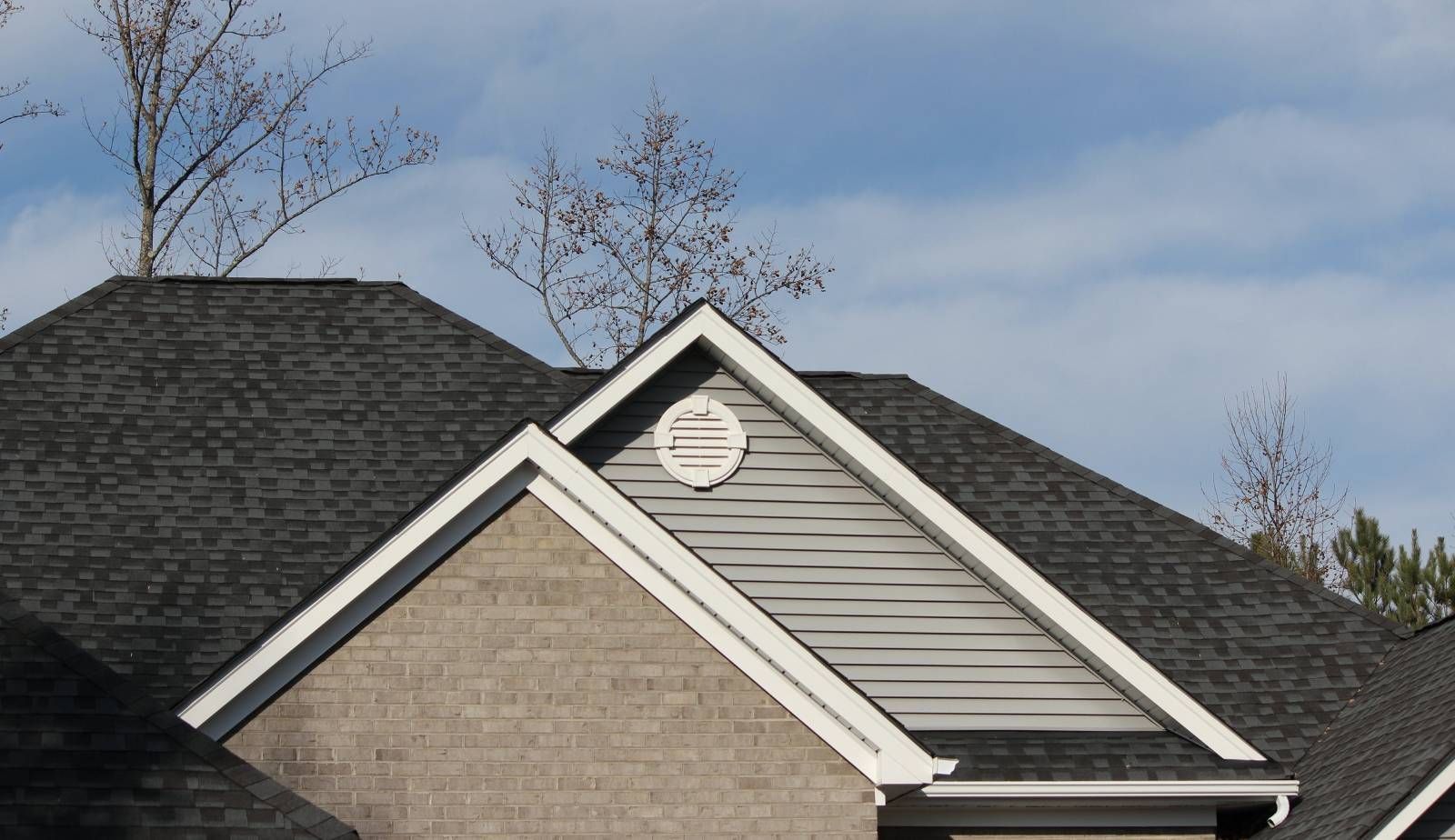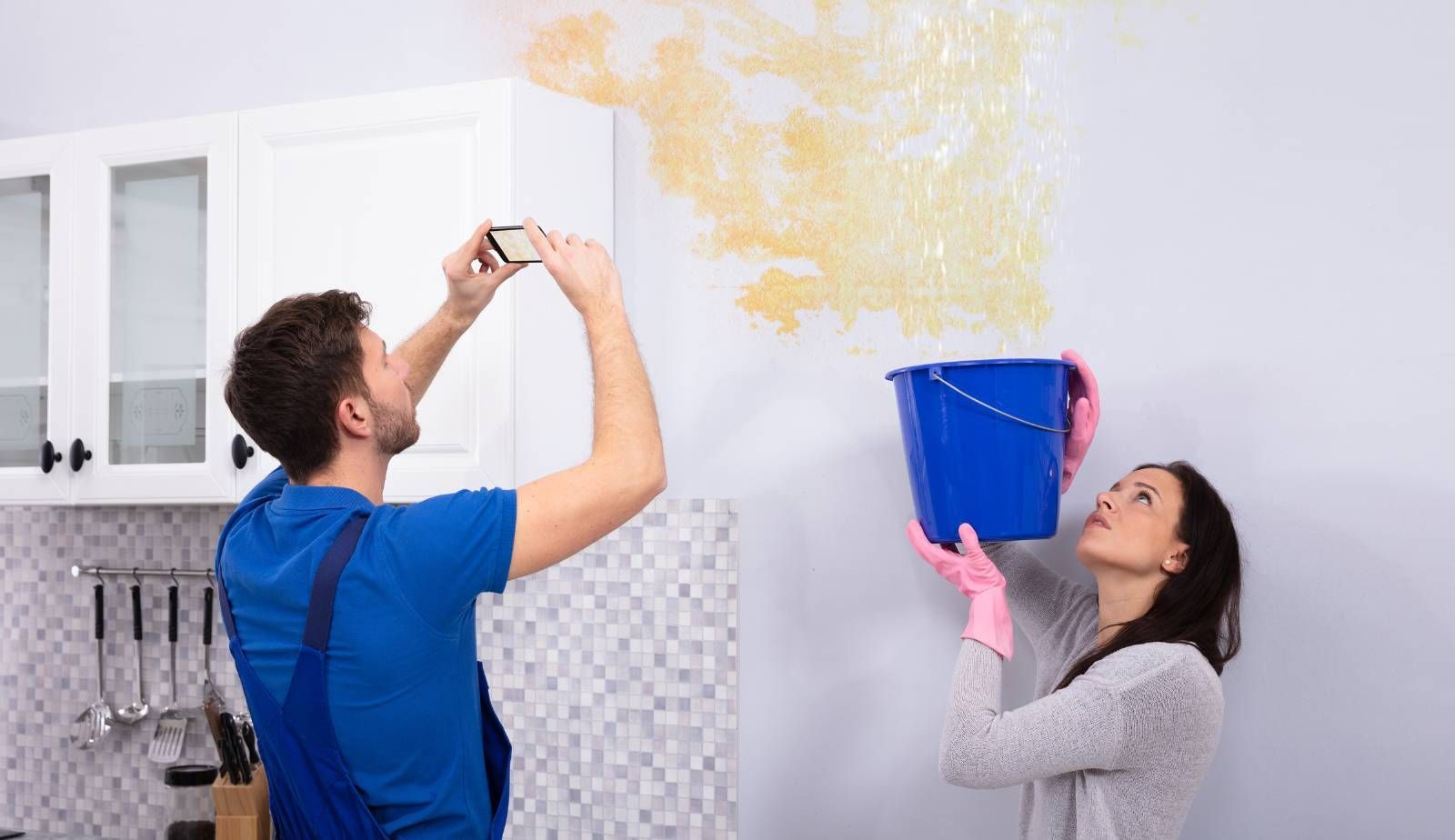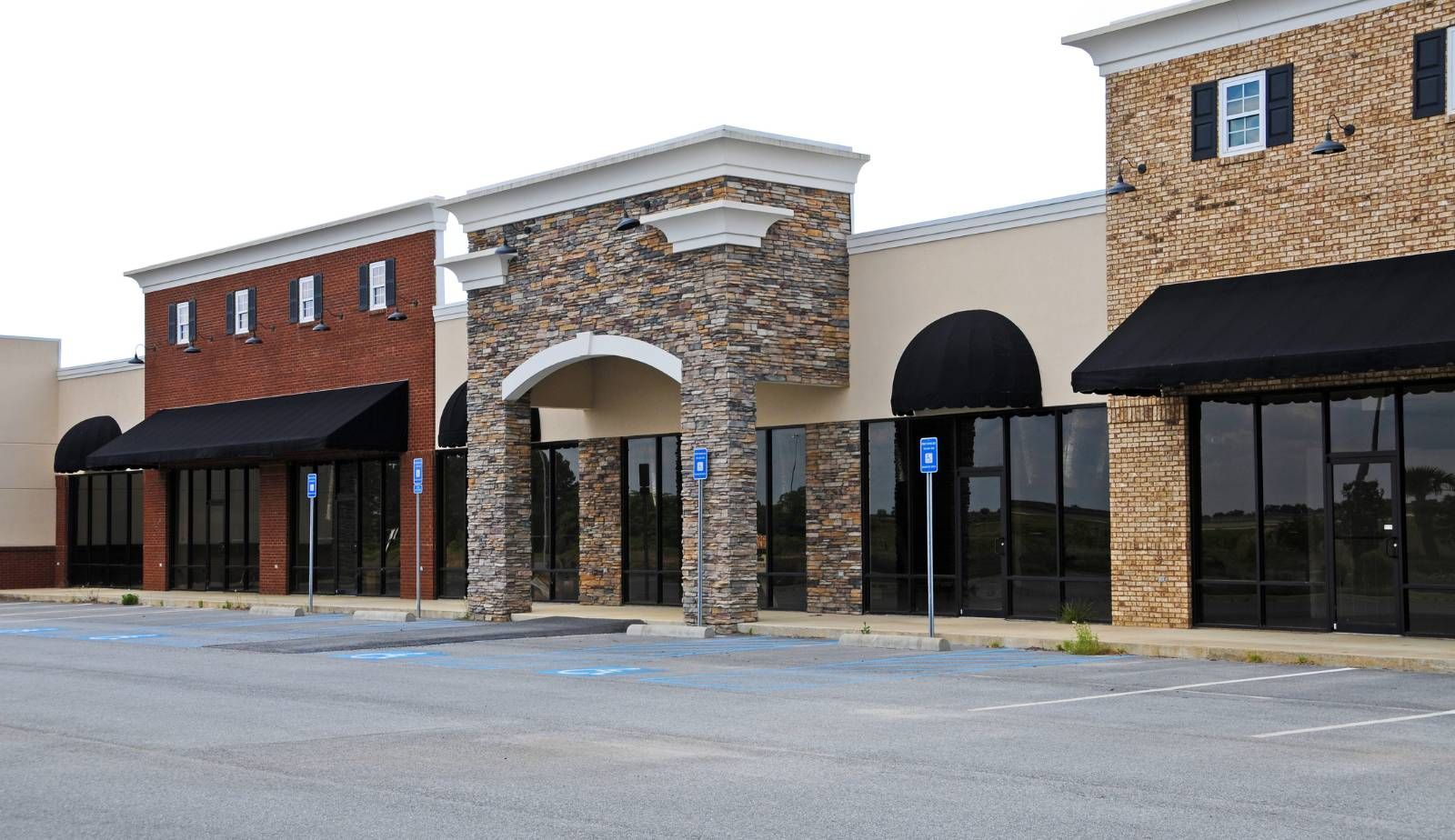The Hidden Dangers of Water Damage in Commercial Settings: Structural Issues, Mold, and Long-Term Effects on Building Materials
Water damage is a common problem in commercial properties in Louisiana that can result from natural disasters, appliance failures, or poor drainage systems.
While the immediate effects of water damage are often visible, such as standing water or soaked carpets, there are also hidden dangers that can cause serious long-term problems. Structural issues, mold growth, and damage to building materials are just a few of the less obvious problems that can arise from water damage in commercial settings.
Structural issues are one of the most serious hidden dangers of water damage in commercial properties. Water can weaken the structural components of a building, causing them to become unstable and potentially hazardous. Over time, this can lead to costly repairs and even safety hazards for employees and customers. Structural damage is often difficult to detect, so it is important to have a professional inspection after any water damage event.
Mold growth is another hidden danger of water damage in commercial settings. Mold can grow quickly in damp environments and can cause serious health problems for employees and customers. It can also damage building materials and lead to costly repairs. Mold is often difficult to detect, so it is important to have a professional inspection and remediation if necessary.
Understanding Water Damage in Louisiana Commercial Settings
Water damage is a serious issue that can cause significant problems in commercial buildings. It can lead to structural damage, mold growth, and long-term effects on building materials. Understanding water damage and its sources is crucial in preventing and mitigating its effects. This section will define water damage and its sources and discuss the types of water damage that can occur in commercial settings.
Defining Water Damage and Its Sources
Water damage refers to any damage caused by water intrusion. It can occur due to various sources, including leaks, burst pipes, flooding, roof leaks, sewer backup, and natural disasters. Water damage can occur in any part of a commercial building, including the foundation, walls, floors, and ceilings. If left untreated, water damage can cause structural damage, mold growth, and health problems.
Leaks and burst pipes are common sources of water damage in commercial buildings. They can occur due to aging infrastructure, corrosion, or inadequate installation. Roof leaks can also cause water to seep into the building during heavy rainfall. Sewer backup is another source of water damage that can lead to health hazards.
Natural disasters such as hurricanes, floods, and storms can cause significant water damage to commercial buildings. In addition to water damage, they can also cause wind damage and other types of damage that can compromise the building's structural integrity.

Types of Water Damage
There are three types of water damage that can occur in commercial settings: clean water damage, gray water damage, and black water damage. Clean water damage refers to water damage caused by clean water sources such as broken pipes, rainwater, and melting snow. Gray water damage refers to water damage caused by water that contains some level of contaminants such as washing machine overflow and dishwasher leaks. Black water damage refers to water damage caused by water that contains hazardous contaminants such as sewage backup and flooding from rivers or streams.
Each type of water damage requires a different approach to restoration and remediation. Clean water damage can be treated with drying and dehumidification, while gray and black water damage requires more extensive cleaning and disinfection.
Understanding water damage and its sources is crucial in preventing and mitigating its effects in commercial settings. By identifying the source of water damage and taking appropriate measures to address it, building owners and property managers can ensure the safety and well-being of their occupants and protect their investment.
Structural Impacts of Louisiana Water Damage
Water damage can have severe impacts on the structural integrity of commercial properties. The damage can be caused by various factors, including floods, heavy rains, leaking pipes, and faulty drainage systems. In this section, we will discuss the less obvious structural issues that water damage can cause in commercial properties.
Compromised Foundations and Walls
Water damage can cause significant damage to the foundation of commercial buildings, leading to structural instability. Water can penetrate the foundation and cause the soil to shift, leading to cracks and instability. In turn, this can cause walls to crack or shift, leading to further damage and potential collapse.
Roof and Ceiling Deterioration
Water damage can also cause damage to the roof and ceiling of commercial properties. The water can penetrate the roof and cause damage to the insulation, leading to mold growth and structural damage. Additionally, water can cause the ceiling to sag or deteriorate, leading to potential collapse.
Long-Term Effects on Building Materials
Water damage can also have long-term effects on building materials. For example, water can cause wood to warp or rot, leading to further structural damage. Concrete can also be affected by water damage, leading to cracks and instability.
It is essential to address water damage as soon as possible to prevent further damage to the structural integrity of commercial properties. Regular inspections and maintenance can also help identify potential issues before they become severe.
Water damage can cause severe structural damage to commercial properties, including compromised foundations and walls, roof and ceiling deterioration, and long-term effects on building materials. Regular inspections and maintenance are crucial to identifying potential issues before they become severe.

Health Risks Associated with Water Damage
Water damage in commercial settings can lead to serious health risks for employees, customers, and anyone who enters the building. In particular, mold and mildew growth, bacteria and contamination, and allergies and respiratory problems are common health hazards associated with water damage.
Mold and Mildew Growth
Mold and mildew thrive in damp environments, and water damage creates the perfect conditions for their growth. Prolonged exposure to mold and mildew can lead to serious health problems, including respiratory issues, allergies, and even neurological problems. It is essential to address mold and mildew growth as soon as possible to prevent further damage and potential health risks.
Bacteria and Contamination
Water damage can also lead to bacterial growth and contamination. Bacteria can grow rapidly in moist environments and can pose serious health risks, including infections and illnesses. It is important to properly clean and disinfect areas affected by water damage to prevent bacterial growth and contamination.
Allergies and Respiratory Problems
Water damage can also lead to allergies and respiratory problems. Exposure to mold, mildew, and other airborne allergens can trigger allergic reactions and respiratory issues, such as asthma. It is essential to address water damage and any resulting mold or mildew growth promptly to prevent further health risks.
Water damage in commercial settings can lead to serious health risks, including mold and mildew growth, bacterial contamination, and allergies and respiratory problems. It is essential to address water damage promptly and thoroughly to prevent further damage and potential health risks.
Equipment and Electrical System Damage
Water damage can cause significant harm to equipment and electrical systems in commercial settings. This damage can result in costly repairs and replacements, as well as pose serious safety risks to building occupants. In this section, we will discuss the specific dangers of water damage to HVAC systems and electrical equipment, including water heaters and major appliances.
HVAC Systems and Electrical Hazards
HVAC systems are particularly vulnerable to water damage, as they rely on electrical components to function. When water comes into contact with electrical systems, it can cause short circuits and other electrical hazards. This can lead to fires, electrocution, and other serious safety risks.
To prevent these dangers, it is essential to have HVAC systems inspected and maintained regularly. Any signs of water damage should be addressed immediately, and damaged components should be replaced as soon as possible. Additionally, HVAC systems should be installed in areas that are less likely to be affected by water damage, such as elevated areas or areas with proper drainage.
Water Heaters and Major Appliances
Water heaters and major appliances are also at risk of water damage in commercial settings. When water heaters flood, they can cause significant damage to surrounding areas, including structural damage and mold growth. Major appliances such as refrigerators, dishwashers, and washing machines can also be damaged by water, leading to costly repairs and replacements.
To prevent water damage to water heaters and major appliances, it is essential to have them inspected and maintained regularly. Any signs of water damage should be addressed immediately, and damaged components should be replaced as soon as possible.
Additionally, these appliances should be installed in areas that are less likely to be affected by water damage, such as elevated areas or areas with proper drainage.
Water damage can cause significant harm to equipment and electrical systems in commercial settings. To prevent these dangers, it is essential to have regular inspections and maintenance, address any signs of water damage immediately, and install equipment and appliances in areas that are less likely to be affected by water damage.

Operational and Financial Consequences
Water damage in commercial settings can have severe operational and financial consequences. The following subsections will explore some of the most significant impacts of water damage in commercial properties.
Business Interruption and Lost Revenue
Water damage can cause significant business interruption and lost revenue. Temporary closures, service delays, and operational setbacks can result in dissatisfied customers and occupants who question the reliability of the business. In some cases, businesses may need to relocate temporarily or permanently, resulting in additional costs and lost revenue.
Costly Repairs and Insurance Claims
Water damage can weaken structural components, leading to costly repairs and potential safety hazards. Sensitive equipment such as computers, servers, and manufacturing tools can be severely damaged by water, resulting in costly repairs or replacements. According to a report by PropertyCasualty360, the average cost of water damage claims in commercial properties is about $24,000. Individual damage claims can be as high as $2.5 million.
In addition to the financial costs, water damage can also result in insurance claims that can affect the business's bottom line. Insurance premiums may increase, and some insurance providers may even refuse to renew the policy altogether.
Water damage can have severe operational and financial consequences for commercial properties. Business interruption, lost revenue, costly repairs, and insurance claims are just some of the impacts that water damage can cause. It is essential to take preventative measures to minimize the risk of water damage and to have a plan in place to address any water damage that may occur.
Preventive Measures and Maintenance
Water damage can be detrimental to commercial properties, causing structural issues, mold growth, and long-term damage to building materials. However, there are several preventive measures and maintenance strategies that can be implemented to mitigate the risks of water damage.
Regular Inspections and Maintenance
Regular inspections and maintenance are crucial in preventing water damage in commercial properties. This includes inspecting the building's roofing, plumbing, and drainage systems. It is recommended that inspections are conducted at least twice a year, especially before and after the rainy season. By identifying and addressing potential issues early on, property owners can prevent costly repairs and damage to the building's structure and materials.
Proactive Mitigation Strategies
Proactive mitigation strategies can help prevent water damage before it occurs. Implementing proper drainage systems and ensuring that gutters and downspouts are clear of debris can prevent water from pooling on the roof and around the building's foundation. Additionally, installing a water detection system can alert property owners of potential leaks and water damage, allowing them to take immediate action.
Developing an Emergency Response Plan
Developing an emergency response plan is essential in mitigating the risks of water damage in commercial properties. This plan should include procedures for shutting off the water supply, evacuating the building, and contacting emergency services. Property owners should also have a list of emergency contacts readily available and ensure that all employees are aware of the emergency response plan.
In conclusion, implementing preventive measures and maintenance strategies can help mitigate the risks of water damage in commercial properties. Regular inspections and maintenance, proactive mitigation strategies, and developing an emergency response plan can prevent costly repairs and damage to the building's structure and materials.
Professional Water Damage Restoration and Remediation in Louisiana
Water damage can be a serious problem for commercial properties, and it is important to act quickly to mitigate the damage and prevent further issues. In many cases, professional water damage restoration and remediation services are necessary to ensure that the property is restored to its pre-loss condition.
Choosing Qualified Restoration Services
When selecting a water damage restoration service, it is important to choose a company with experience and expertise in this area. Look for a company with a reputation for providing professional restoration services, and make sure that they have the specialized equipment necessary to handle comprehensive restoration and disinfection.
The Restoration Process
The restoration process typically involves several steps, including assessment of the damage, removal of standing water, drying and dehumidification, and disinfection. In some cases, mold remediation may also be necessary to address any mold growth that has occurred as a result of the water damage.
Immediate action is necessary to prevent further damage and ensure the safety of the property and its occupants. Professional restoration services can provide the expertise and experience necessary to ensure that the restoration process is completed quickly and effectively.
It is important to take water damage seriously and to act quickly to address the issue. With the help of professional restoration services, commercial property owners can ensure that their properties are restored to their pre-loss condition and that any hidden dangers, such as mold growth or structural issues, are addressed.

Frequently Asked Questions
How can water damage compromise the structural integrity of commercial buildings?
Water damage can compromise the structural integrity of commercial buildings in several ways. For instance, water can weaken the foundation and cause cracks in the walls. Additionally, water can seep into the building's structural components, such as wooden beams, and cause them to rot and weaken over time. This can lead to sagging floors, collapsing ceilings, and other serious structural issues.
What are the long-term effects of water damage on building materials?
Water damage can have long-term effects on building materials, even after the visible signs of damage have been repaired. Moisture can remain trapped in walls, floors, and ceilings, leading to mold growth and deterioration of building materials. This can cause the building to weaken over time, leading to costly repairs and potential safety hazards.
In what ways does water damage contribute to mold growth in commercial properties?
Water damage creates the ideal conditions for mold growth in commercial properties. Mold thrives in moist environments, and water damage can create the perfect breeding ground for mold spores to grow and spread. Once mold takes hold, it can spread quickly throughout the building, leading to serious health risks for occupants.
What hidden electrical risks can arise from water damage in a commercial setting?
Water damage can pose serious electrical risks in commercial settings. Water can cause electrical systems to short circuit, leading to fires and other hazards. Additionally, water can cause damage to electrical wiring and appliances, creating potential safety hazards for building occupants.
How can water damage impact indoor air quality in commercial buildings?
Water damage can have a serious impact on indoor air quality in commercial buildings. Moisture can lead to the growth of mold, which can release spores into the air and cause respiratory issues for building occupants. Additionally, water damage can create the perfect environment for bacteria and other harmful substances to grow, leading to potential health risks for occupants.
What are the financial implications of untreated water damage for business owners?
Untreated water damage can have serious financial implications for business owners. The cost of repairs can be significant, and if left untreated, water damage can lead to serious structural issues that can be costly to repair. Additionally, water damage can lead to lost revenue if the building is unable to operate while repairs are being made. It is important for business owners to address water damage as soon as possible to minimize the financial impact.
You might also like
DryMax Restoration Blogs




